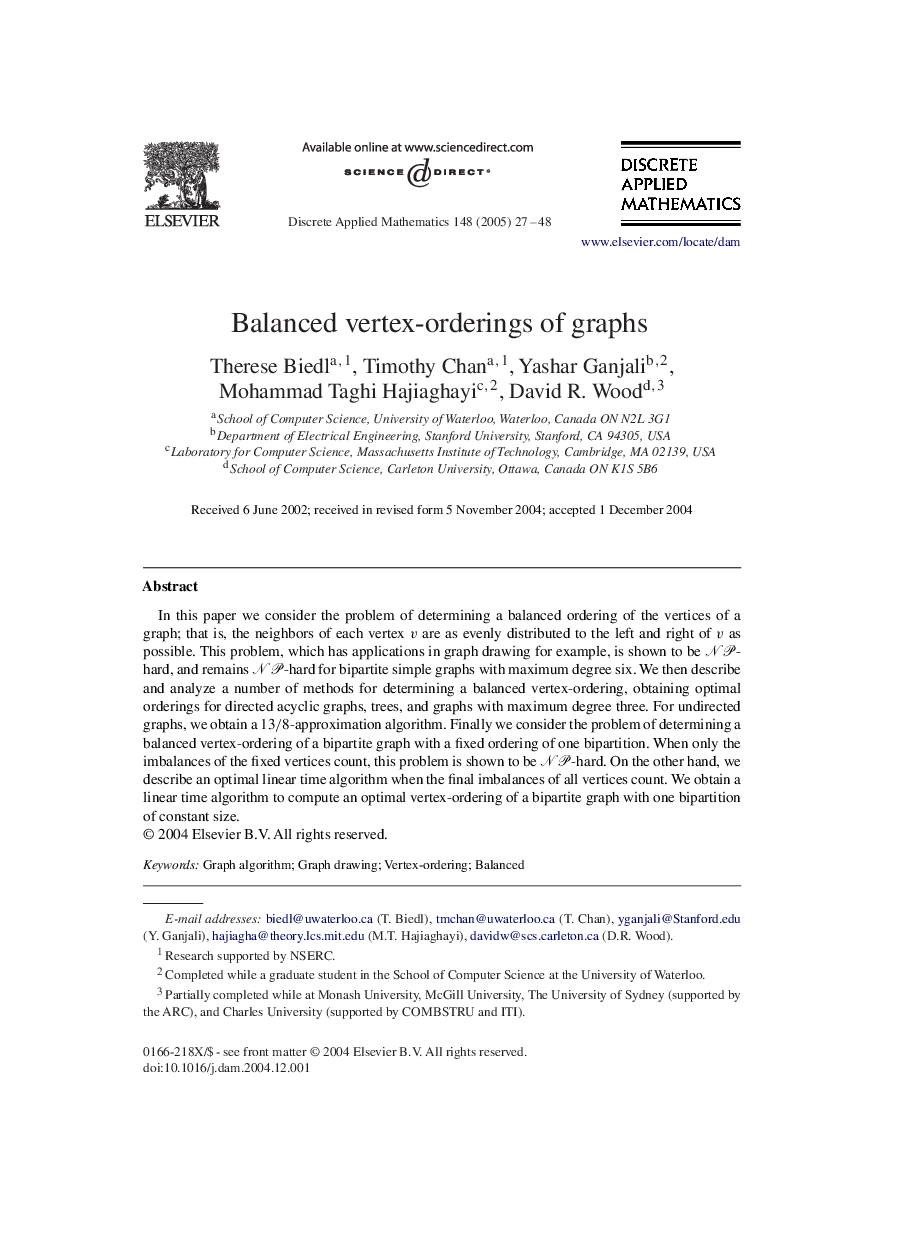| Article ID | Journal | Published Year | Pages | File Type |
|---|---|---|---|---|
| 10328295 | Discrete Applied Mathematics | 2005 | 22 Pages |
Abstract
In this paper we consider the problem of determining a balanced ordering of the vertices of a graph; that is, the neighbors of each vertex v are as evenly distributed to the left and right of v as possible. This problem, which has applications in graph drawing for example, is shown to be NP-hard, and remains NP-hard for bipartite simple graphs with maximum degree six. We then describe and analyze a number of methods for determining a balanced vertex-ordering, obtaining optimal orderings for directed acyclic graphs, trees, and graphs with maximum degree three. For undirected graphs, we obtain a 13/8-approximation algorithm. Finally we consider the problem of determining a balanced vertex-ordering of a bipartite graph with a fixed ordering of one bipartition. When only the imbalances of the fixed vertices count, this problem is shown to be NP-hard. On the other hand, we describe an optimal linear time algorithm when the final imbalances of all vertices count. We obtain a linear time algorithm to compute an optimal vertex-ordering of a bipartite graph with one bipartition of constant size.
Keywords
Related Topics
Physical Sciences and Engineering
Computer Science
Computational Theory and Mathematics
Authors
Therese Biedl, Timothy Chan, Yashar Ganjali, Mohammad Taghi Hajiaghayi, David R. Wood,
